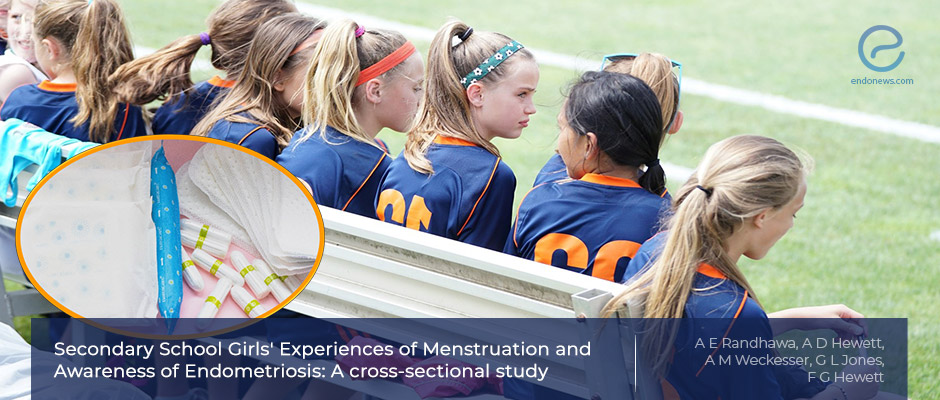Do Adolescents Know About Endometriosis?
Mar 4, 2021
Most secondary school girls do not know about endometriosis, according to a study by British scientists.
Key Points
Highlights:
- Period pain is very common among girls of secondary school age.
- Over a quarter of them don’t know whether their period is typical or atypical.
- A very small percentage of the girls are aware of endometriosis.
- Most of them want to learn more about the disease.
Importance:
- There is a need of providing menstrual health education in secondary schools to improve girls’ menstrual health knowledge, pain management, and timely identification of any gynecological problems.
What's done here:
- Researchers conducted a cross-sectional survey among girls in secondary schools to find out about their knowledge of normal periods and endometriosis.
Key results:
- 94% of girls of middle school age experience period pain.
- 86% of them have moderate or severe pain.
- 23% of girls miss school because of their periods.
- 63% of girls believe their periods are regular.
- Self-report of atypical periods is associated with symptoms suggesting a need for clinical review.
- Only 8% of girls can describe endometriosis.
- 86% of girls want to learn more about endometriosis.
Limitations:
- There are no validated questionnaires to draw upon the one used here.
- Some girls confused the length of their period with the length of their whole cycle when answering the survey.
- Some girls might have deducted that endometriosis is a painful condition and described it as such based on the questions focusing on their period pain experience.
- Girls might have said they wanted to learn about endometriosis because it was introduced to them in the survey.
- The survey did not include questions about heavy periods, which might point to an underlying health condition.
- Although low, the use of oral contraceptive pills could have influenced the length of the girls’ menstrual cycle, its regularity as perceived by the girls, and pain levels.
- The survey did not include questions about the use of intrauterine devices or contraceptive injections, which could have had an influence on the menstrual cycle and pain.
Lay Summary
Most secondary school girls have painful periods and many of them don’t know what typical periods are like, according to a study published in the "Journal of Pediatric and Adolescent Gynecology".
The majority of the girls do not have knowledge of endometriosis, although they are familiar with other chronic conditions such as diabetes and epilepsy. This finding is important and suggests that menstrual health education at school is important to improve knowledge about what a typical period is like, how to treat pain and common gynecological conditions like endometriosis.
Researchers think that endometriosis affects around 10% of women of reproductive age. If left untreated endometriosis can lead to chronic pelvic pain and possible infertility. If adolescents are not aware of the characteristics of a typical period, they may not be able to recognize signs of the disease or seek out help for abnormal symptoms.
In order to characterize typical menstrual characteristics in secondary school girls and to explore their knowledge about typical menstruation and endometriosis, a team of researchers led by Dr. F.G. Hewett conducted a cross-sectional survey among 442 girls, ages 15 to 19 in the West Midlands region of England. The survey included questions about the age, ethnicity, and school type of the girls as well the age at which they had their first period, their menstrual cycle patterns, and experiences. It also included questions about the girls’ awareness of endometriosis, and whether or not they wanted to learn more about it.
When they analyzed the girls’ answers, researchers found that period pain was very common among secondary school girls with 94% of them experiencing it. Eighty-six percent of girls reported their period pain to be moderate or severe and 23% said they missed school due to their period mostly because of the pain. Most of the girls (63%) thought their periods were typical. There was an association between girls reporting atypical periods and disease symptoms, suggesting the need for a consultation with a doctor and clinical review.
Only 8% of girls could describe what endometriosis was but most of them wanted to learn more about it.
“We suggest Menstrual Health Education for improving knowledge of typical menstruation and pain treatment aiding earlier identification of problematic period symptoms that might indicate underlying pathology,” the researchers wrote. They added: “Such provision is key to improving girls’ menstrual health knowledge, experiences, and outcomes”.
Research Source: https://pubmed.ncbi.nlm.nih.gov/33548448/
survey knowledge period pain menstruation

